Stair Tread Around Newel Post Advice
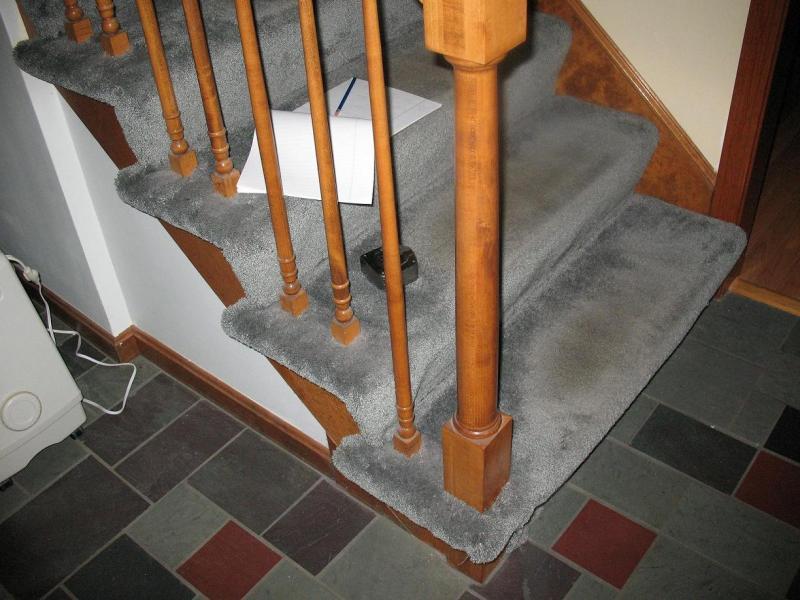 I’ll be replacing the carpeting on the stairs in the attached photo with hardwood treads and I’m wrestling with how to do the tread on the first step that has the newel post running through it. I have a one piece pre-finished solid tread that is bullnosed. My plan is to measure from the closed end skirt to the nearest edge of the newel post and crosscut the tread from its back edge to the front corner of the newel post leaving the front edge of the tread uncut. Then rip the tread from its open end to the same front corner of the newel post which would leave the nosing area intact along the entire length of the tread. The tread is now notched around 2 sides of the newel post. I would miter the end of the tread nosing and make a wide bull nosed return that would be mitered to match the tread nosing and be notched around the other 2 sides of the newel
I’ll be replacing the carpeting on the stairs in the attached photo with hardwood treads and I’m wrestling with how to do the tread on the first step that has the newel post running through it. I have a one piece pre-finished solid tread that is bullnosed. My plan is to measure from the closed end skirt to the nearest edge of the newel post and crosscut the tread from its back edge to the front corner of the newel post leaving the front edge of the tread uncut. Then rip the tread from its open end to the same front corner of the newel post which would leave the nosing area intact along the entire length of the tread. The tread is now notched around 2 sides of the newel post. I would miter the end of the tread nosing and make a wide bull nosed return that would be mitered to match the tread nosing and be notched around the other 2 sides of the newel  newel post. Yah or Nah?
newel post. Yah or Nah?
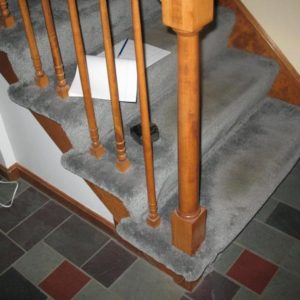
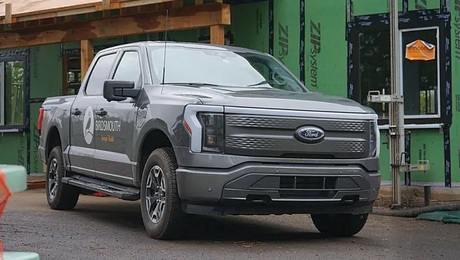
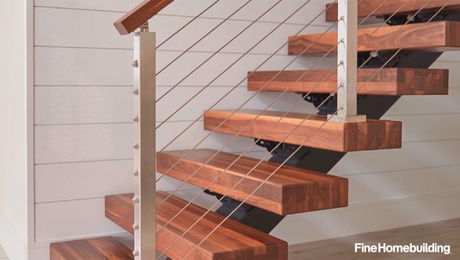
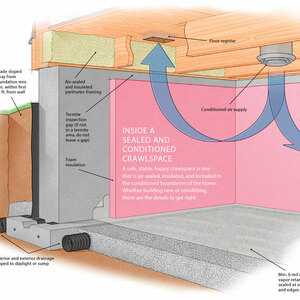

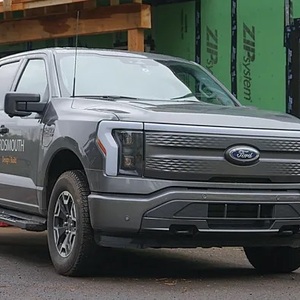
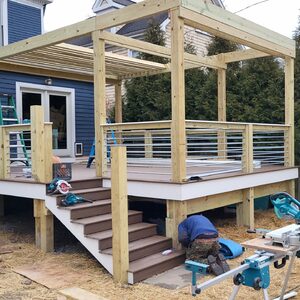












Replies
No picture attached.
I couldn't quite follow what you want to do from your post with no picture. I would cut the tread length wise with a band saw, being careful to follow the grain. Cut a notch for the post. Install the two pieces of the tread and glue them together. The cut following the grain should be almost invisible.
Stair tread Around Newel Post
I see the picture in the body of the post. Not visible to you?
Stair tread Around Newel Post
First time uploading a picture. I'll try again.
I can see it now.
The bandsaw with the grain technique should work great for the newl. I don't mean just cut in the direction of the grain, I mean follow the lines of the grain. I have a sculpted wooden box that was made from a single piece of wood that was cut apart on a band saw with the grain hollowed out and reassembled as parts, drawers, lid etc. that doesn't show any seams at all. How are you going to handle the balusters?
Stair tread Around Newel Post
The balusters appear to be toe nailed top and bottom. I've seen videos where the balusters can be slid out but mine don't seem to be like that so what I was planning to do is undercut them with a multi tool....same process that I used for undercutting door jambs when I removed wall to wall carpeting throughout my house and installed hardwood flooring. Slide the tread under the balusters and toe nail.
I don't have a bandsaw and I saw this stair tread install method in a video. It leaves the walking area of the tread including the entire length of the nosing uncut (no joints). It is done on a table saw and scms (both of which I have) and a short cut with a hand saw or jig saw.
Stair tread Around Newel Post
No plugs in newel. Must be attached from inside. Would have to remove subtread to be able to remove newel. Also, newel has grout around its base.
Stair Treads
Hey Jimmien,
The best/easiest way to do this job is to remove all the balusters first. Flush cutting all those baluster ends and sliding treads under and re-attaching won't be as fast or finished as pulling them and chopping them to size on a miter saw. Since the balusters should all come off anyway it would be nice to remove the handrail. The newell would be the one thing I wouldn't remove. Now you are back to the regular order of operations for finishing a set of stairs. With careful math and maybe a template you can cut a square hole in the starting tread and drop it over the newell. Finish all the treads, and with the handrail off now you can properly install the balusters with dowels glued at the bottom and the tops let into the underside of the top rail - no more toe nails. Best of luck.
stair treads
I'll definitely do the blasters as you suggest. If you notice in the picture their is a door casing at the opposite end of the tread from the newell post. The casing is tapered and has a profile. Also, the skirt board is slightly proud of the casing. My neighbor had the same situation and the installer just did an angle cut at the front of the tread to run along the casing which left gaps along the profile and I did not think it looked good. I want to notch the casing the same way I undercut door jambs for flooring and let the stair tread go into the casing. If I do this then I would not be able to slide the tread over the newell assuming that the hand rail had been removed. Also, just looking at the hand rail it would probably be a throwaway if I removed it. Also, while I'm cutting the casing what about cutting the skirt too? This would make it lot easier to fit the first tread which will be notched to fit around the newell and give a bit of wiggle room on the skirt and casing end.
how did you do
It has been a year since you posted this.
How did you install with the wood tread around the newel post? Did you remove the newel post and then make a square hole on your wood stair tread or do you cut the stair tread on three sides and then install another piece and the nose on the front?
I'm having the stair structural plan exactly like your stair. I want to know how to put wood tread on the 1st step, but there is the newel post.
skong76 Newel Post
Hello skong76,
I'm attaching a few pictures. I did not remove the newel post. I notched the tread to butt up against the post. I cut into the skirt on the opposite end of the tread so I could slide the tread into it and then slide it out tight against the newel. I left the bullnose on the entire length of the tread and then cut the end cap piece to fit the backside and outside of the newel post. The pictures should show you the joint lines. Take a look and then reply back with more questions. You can PM me if you would like.
Also, I did remove the ballusters. I cut them off flush at the bottom after removing the carpeting. I reattached them with hanger type bolts that screw into the bottom of the balluster and screw into a threaded insert that is installed in the tread. I found them on-line. Not expensive and easy to do. The only tricky part was drilling into the underside of the hand rail so that the ballusters could slide up to allow the screw on the bottom to clear the tread.
Your stair is pretty. what an excellent job!!!
The oak stair tread looks like 1" thick wood tread.
Did you take out all the existing stair tread and put the new Oak tread in?
Did you Glue and the staple them? I'm just curious it must be a difficult and time consuming job to take out the exist stair tread.
Your stair is pretty. what an excellent job!!!
The oak stair tread looks like 1" thick wood tread.
Did you take out all the existing stair tread and put the new Oak tread in?
Did you Glue and the staple them? I'm just curious it must be a difficult and time consuming job to take out the exist stair tread.
Stair Treads
The stair treads you see are 3/4" thick red oak. The treads that were under the carpet were 3/4" plywood. I left the plywood subtreads in place, cut their noses off so that they would be flush with the risers, which were also plywood. I then covered the risers with my finished risers which I made from cabinet grade red oak. I then put on the 3/4" read oak treads. I glued both the treads and risers with PL Premium Adhesive and nailed them with 15 gauge finish nails. Some people remove the treads which are under the carpet and install the treads directly to the stringers. This type of tread would usually be a little more than 1" thick. When deciding which way to do it you need to make sure that all dimensions conform to building codes for safety reasons. I bought my treads and risers unfinished and did the finishing myself. It's not too difficult to do this work. The cuts need to be accurate in order to avoid gaps between the joints. Also, having the correct tools will make the work a lot easier.